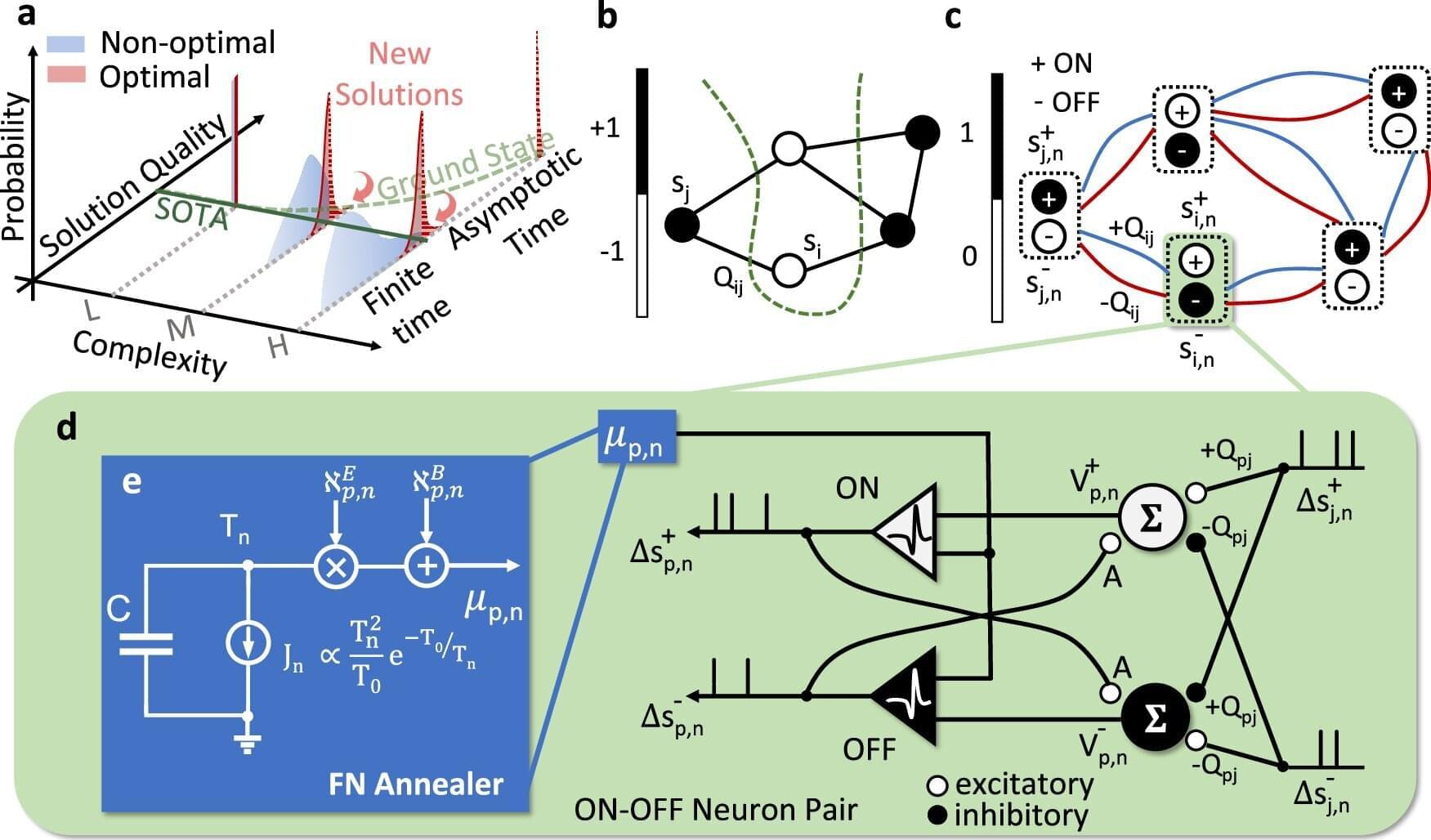It’s easy to solve a 3×3 Rubik’s cube, says Shantanu Chakrabartty, the Clifford W. Murphy Professor and vice dean for research and graduate education in the McKelvey School of Engineering at Washington University in St. Louis. Just learn and memorize the steps then execute them to arrive at the solution.
Computers are already good at this kind of procedural problem solving. Now, Chakrabartty and his collaborators have developed a tool that can go beyond procedure to discover new solutions to complex optimization problems in logistics to drug discovery.
Chakrabartty and his collaborators introduced NeuroSA, a problem-solving neuromorphic architecture modeled on how human neurobiology functions, but that leverages quantum mechanical behavior to find optimal solutions—guaranteed—and find those solutions more reliably than state-of-the-art methods.
